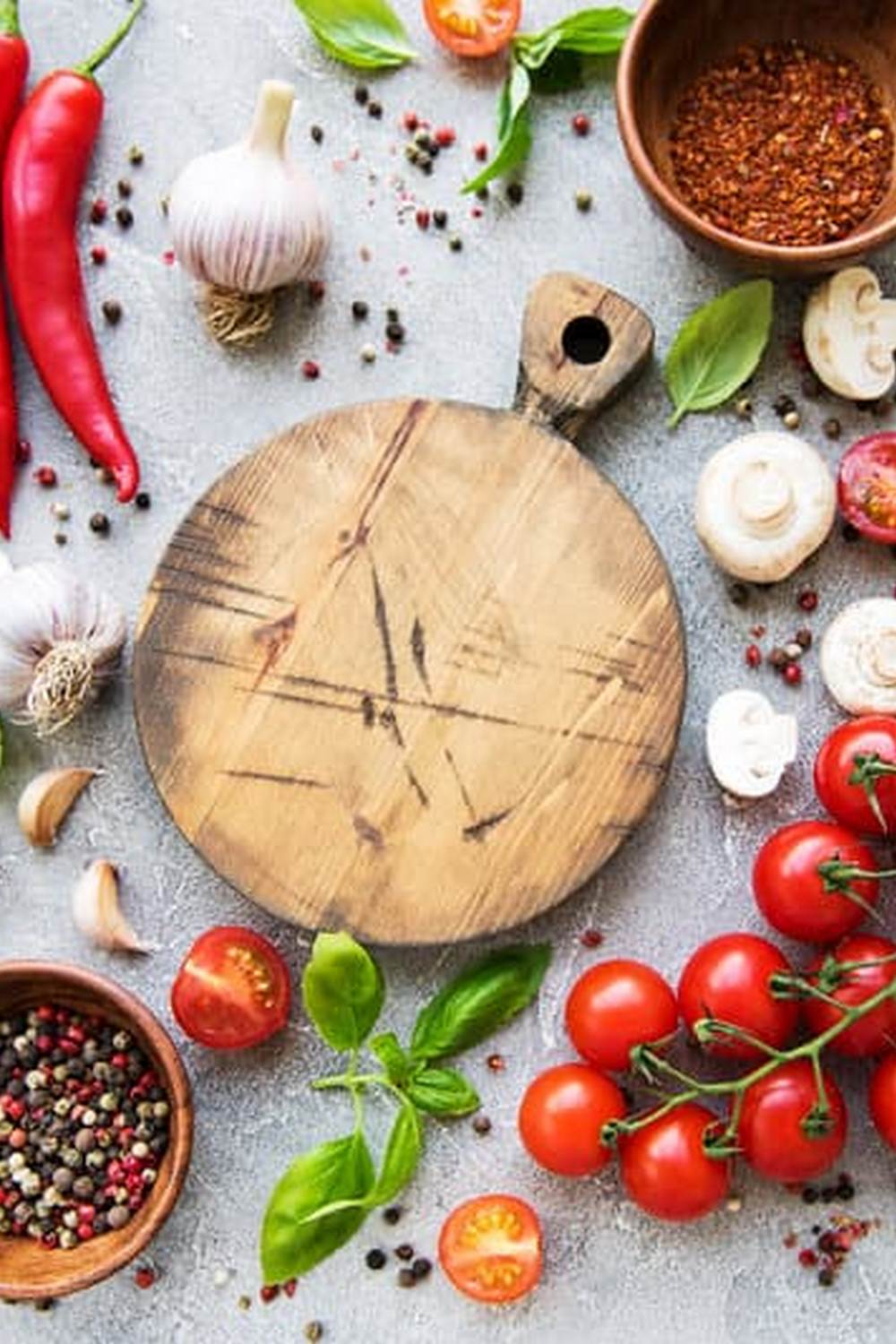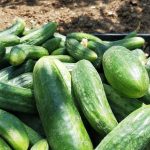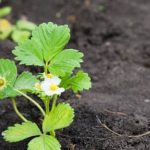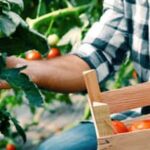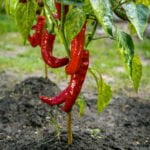Pictures of container gardens vegetables have become increasingly popular among urban gardeners and those with limited outdoor space. Container gardening offers a convenient and efficient way to grow a variety of vegetables right at home, whether you have a small balcony, patio, or even just windowsills. The benefits of container gardens are vast, from having fresh produce at your fingertips to the satisfaction of nurturing plants from seed to harvest.
One of the key advantages of container gardening is the flexibility it provides in terms of choosing the right containers for different types of vegetables. From traditional terracotta pots to hanging baskets and self-watering containers, there are numerous options available to suit your space and aesthetic preferences. Additionally, container gardening allows for better control over soil quality, drainage, and sunlight exposure compared to traditional in-ground gardening.
When it comes to selecting the right vegetables for container gardening, certain varieties thrive in confined spaces and can be easily managed in containers. From vibrant cherry tomatoes to aromatic herbs like basil and thyme, there is a wide range of vegetables that can flourish in containers with proper care. Understanding the specific growing requirements of each vegetable is essential for successful container gardening, ensuring optimal growth and bountiful harvests.
Choosing the Right Containers
Container gardening has gained immense popularity among urban gardeners and those with limited outdoor space due to its convenience and versatility. Choosing the right containers for growing vegetables is essential to ensure the success of your garden. There are various options available, each with its own advantages and considerations.
When selecting containers for your vegetable garden, it’s important to consider factors such as size, material, drainage, and mobility. Here are some common types of containers suitable for vegetable gardening:
- Traditional clay pots: Known for their aesthetic appeal but may dry out quickly.
- Plastic containers: Lightweight, affordable, and retain moisture well.
- Fabric grow bags: Provide excellent drainage and aeration for plant roots.
- Wooden boxes or crates: Durable and can be customized to fit your space.
Each type of container has its pros and cons, so choose based on your specific needs and the requirements of the vegetables you plan to grow. Remember that proper drainage is crucial to prevent waterlogging, which can lead to root rot and other issues.
Ensure that the containers you choose have sufficient depth for root development and enough room for plant growth. Additionally, consider factors like weight (especially if you plan on moving them around), insulation against extreme temperatures, and compatibility with your overall design aesthetic. By selecting the right containers, you can create a thriving vegetable garden in even the smallest of spaces.
Don’t forget to stay tuned for the next sections as we explore everything from selecting the right vegetables to preparing the soil mix – all to help you achieve a bountiful harvest from your very own container garden. And get ready to be inspired by stunning pictures of container gardens filled with vibrant vegetables that showcase both beauty and productivity.
Selecting the Right Vegetables
When it comes to selecting the right vegetables for your container garden, there are plenty of options that thrive in confined spaces. One of the most popular choices for container gardening is tomatoes. With a wide variety of sizes and colors available, tomatoes can be grown successfully in pots as long as they receive ample sunlight and consistent watering. Other excellent vegetables for containers include peppers, lettuce, carrots, radishes, and herbs like basil and parsley.
Best Vegetables for Small Containers
If you are limited on space, there are certain vegetables that are well-suited for small containers. For example, cherry tomatoes, small varieties of peppers such as bell peppers or jalapenos, and dwarf varieties of beans like bush beans can all flourish in compact pots or hanging baskets. These smaller vegetables not only fit well in limited space but also produce bountiful harvests when cared for properly.
Growing Requirements
It’s essential to consider the growing requirements of each vegetable when selecting what to plant in your container garden. Most vegetables need at least 6-8 hours of sunlight daily to thrive, so be sure to place your containers in a sunny location. Additionally, proper drainage is crucial to prevent waterlogged soil which can lead to root rot.
Regular watering and occasional feeding with a balanced fertilizer will help your container vegetables reach their full potential. By understanding the specific needs of each vegetable you choose to grow, you can create a successful and productive container garden filled with an array of fresh produce throughout the season.
Preparing the Soil
When it comes to growing vegetables in containers, one of the crucial factors for success is the soil mix used. The right soil provides essential nutrients and proper drainage, ensuring optimal growth for your container garden vegetables. Here are some key tips for preparing the soil mix to create a thriving environment for your plants.
Choosing the Right Soil Components
The soil mix for container gardening should be lightweight, well-draining, and rich in nutrients. A blend of peat moss, vermiculite or perlite, and compost is an excellent choice for vegetable container gardening. Peat moss helps retain moisture, while vermiculite or perlite improves drainage and aeration. Compost provides essential nutrients for plant growth.
Adding Nutrients
In addition to using a nutrient-rich compost in your soil mix, you can also incorporate organic fertilizers to ensure your container vegetables have access to essential nutrients throughout their growing season. Consider adding slow-release organic fertilizers or liquid seaweed extract to provide a steady supply of nutrients for healthy plant development.
Avoiding Compaction
To prevent soil compaction in your containers, which can hinder root growth and water infiltration, avoid stepping on the soil when planting or caring for your vegetable plants. Regularly fluffing up the top layer of soil with a hand fork can also help improve aeration and prevent compaction. Additionally, adding mulch to the top of the soil can help retain moisture and regulate temperature levels in the container garden.
By following these tips for preparing the soil mix for your container vegetable garden, you can create an ideal environment for your plants to thrive and produce bountiful harvests. Remember that healthy soil is the foundation of successful container gardening, providing your vegetables with the necessary nutrients they need to grow strong and productive.
Planting and Watering
Planting vegetables in containers is a great way to enjoy homegrown produce, even if you have limited space or poor soil quality in your garden. To ensure successful growth, it is essential to follow proper planting techniques and watering practices. Here is a step-by-step guide on how to plant vegetables in containers and maintain adequate moisture levels for optimal growth:
- Choose the Right Containers: Select containers that are large enough to accommodate the root systems of your chosen vegetables. Make sure they have drainage holes at the bottom to prevent waterlogging.
- Selecting the Right Soil Mix: Use a well-draining soil mix specifically formulated for container gardening. You can also create your own mix by combining potting soil, compost, and perlite or vermiculite for added aeration.
- Planting Process: Fill the container with soil mix, leaving enough space at the top for planting. Place your vegetable seedlings or seeds according to their spacing requirements. Water thoroughly after planting to settle the soil.
Proper watering is crucial for the health and productivity of vegetable plants grown in containers. Here are some tips on watering techniques:
- Check Moisture Levels: Monitor the moisture levels of the soil regularly by inserting your finger into the container up to the first knuckle. Water only when the top inch of soil feels dry.
- Water Slowly and Deeply: When watering, do so slowly to allow water to penetrate deeply into the root zone. Avoid splashing water on leaves to prevent disease issues.
- Use Mulch: Apply a layer of mulch on top of the soil surface to help retain moisture and reduce evaporation. This will also help regulate soil temperature and suppress weeds.
By following these planting and watering guidelines, you can ensure that your container-grown vegetables thrive and provide you with a bountiful harvest. Remember that each vegetable may have specific watering requirements, so it’s essential to research individual plant needs for optimal results.
Caring for Container Vegetables
When it comes to dealing with pests in container gardens, there are several organic methods that you can use to protect your vegetables. Introducing beneficial insects like ladybugs or using natural insecticidal soaps can help control common pests without harming your plants. Additionally, practicing crop rotation and proper spacing between plants can reduce the risk of pest infestations in your container garden.
Fertilizing container vegetables is essential for providing them with the necessary nutrients for healthy growth and optimal production. Using a balanced fertilizer specifically designed for vegetable plants can help ensure that your plants receive all the essential nutrients they need. It’s important to follow the recommended guidelines for fertilization based on the type of vegetables you are growing and their specific requirements. Regular watering and proper drainage are also crucial aspects of fertilizing container vegetables effectively.
| Aspect | Tip |
|---|---|
| Pest Management | Introduce beneficial insects like ladybugs as natural pest control |
| Fertilization | Use a balanced fertilizer designed for vegetable plants based on their specific requirements |
| Maintenance | Regularly inspect plants for signs of disease or pests to prevent further damage |
Harvesting and Enjoying
Harvesting vegetables from your container garden is a rewarding experience after putting in the time and effort to grow them. The timing of harvesting your vegetables plays a crucial role in ensuring the best flavor and texture.
Most vegetables are ready for harvest when they reach a certain size, color, or firmness, depending on the type of vegetable. For example, tomatoes should be harvested when they are fully ripened on the vine for the best taste, while leafy greens like lettuce can be picked when they are young and tender.
When harvesting your vegetables from containers, it’s essential to use sharp scissors or pruners to avoid damaging the plants. Cutting or twisting vegetables off the plant gently helps promote healthy growth for future harvests. Additionally, harvesting regularly encourages continuous production throughout the growing season by allowing new fruits or veggies to develop. Remember that overripe vegetables may affect the taste and overall quality of your produce, so keeping an eye on their readiness is key.
Now that you’ve successfully harvested your fresh homegrown vegetables from your container garden, it’s time to enjoy them in delicious recipes. Whether you have an abundance of cherry tomatoes, zucchinis, or herbs, there are numerous ways to incorporate your yield into meals.
From salads and stir-fries to soups and sandwiches, homegrown vegetables add exceptional flavor and nutritional value to your dishes. Experiment with different recipes and cooking methods to savor the fruits of your labor and relish in the satisfaction of enjoying produce you grew yourself.
| Vegetable | Harvesting Tip |
|---|---|
| Tomatoes | Harvest when fully ripened on vine for best taste |
| Lettuce | Pick when young and tender for optimal flavor |
| Zucchinis | Harvest regularly while small for tender texture |
Showcasing Pictures of Container Gardens Vegetables
In conclusion, container gardening has proved to be a convenient and rewarding way to grow vegetables for many individuals, especially those with limited space or mobility. The benefits of container gardens cannot be overstated, offering the opportunity to cultivate fresh produce right at your doorstep while adding aesthetic value to your surroundings.
By choosing the right containers, selecting the appropriate vegetables, preparing the soil mix correctly, and following proper planting and watering techniques, anyone can successfully grow a bountiful garden in containers.
Taking care of container vegetables involves regular maintenance such as monitoring plant health, dealing with pests effectively, and ensuring proper fertilization. These essential steps ensure that your vegetable plants thrive in their confined environment and continue to produce delicious yields throughout the growing season.
Additionally, knowing when and how to harvest your homegrown vegetables from containers is crucial for enjoying the fruits of your labor. From picking the perfect ripe tomato to plucking crisp lettuce leaves for a salad, there is nothing quite like savoring fresh produce straight from your own garden.
As seen in the stunning images of various container gardens filled with vibrant vegetables, it is clear that creativity knows no bounds when it comes to cultivating edible plants in limited spaces. The visual tour presented here serves as inspiration for both novice and experienced gardeners alike, showcasing the endless possibilities achievable through container gardening.
Whether you are interested in growing herbs on a sunny windowsill or harvesting peppers from a balcony garden, these pictures of container gardens vegetables demonstrate that with dedication and care, anyone can enjoy a flourishing vegetable garden no matter where they call home.
Frequently Asked Questions
What Vegetables Are Good for Container Gardening?
Vegetables that are good for container gardening include tomatoes, peppers, lettuce, radishes, carrots, beans, cucumbers, and herbs like basil and parsley. These plants do well in pots and don’t require a large amount of space to grow.
What Vegetables Grow Well Together in a Container?
Certain vegetables grow well together in a container due to their similar soil, water, and sunlight requirements. For example, tomatoes and basil are companion plants that complement each other’s growth. Other good combinations include carrots and radishes or lettuce and chives.
What Are the Top 10 Vegetables Grown in Containers?
The top 10 vegetables grown in containers are tomatoes, peppers, lettuce, radishes, carrots, beans, cucumbers, spinach, kale, and Swiss chard. These vegetables are popular choices for container gardening due to their compact size and adaptability to growing in pots.

If you’re looking to get into vegetable gardening, or are just looking for some tips on how to make your current garden better, then you’ve come to the right place! My name is Ethel and I have been gardening for years. In this blog, I’m going to share with you some of my best tips on how to create a successful vegetable garden.

